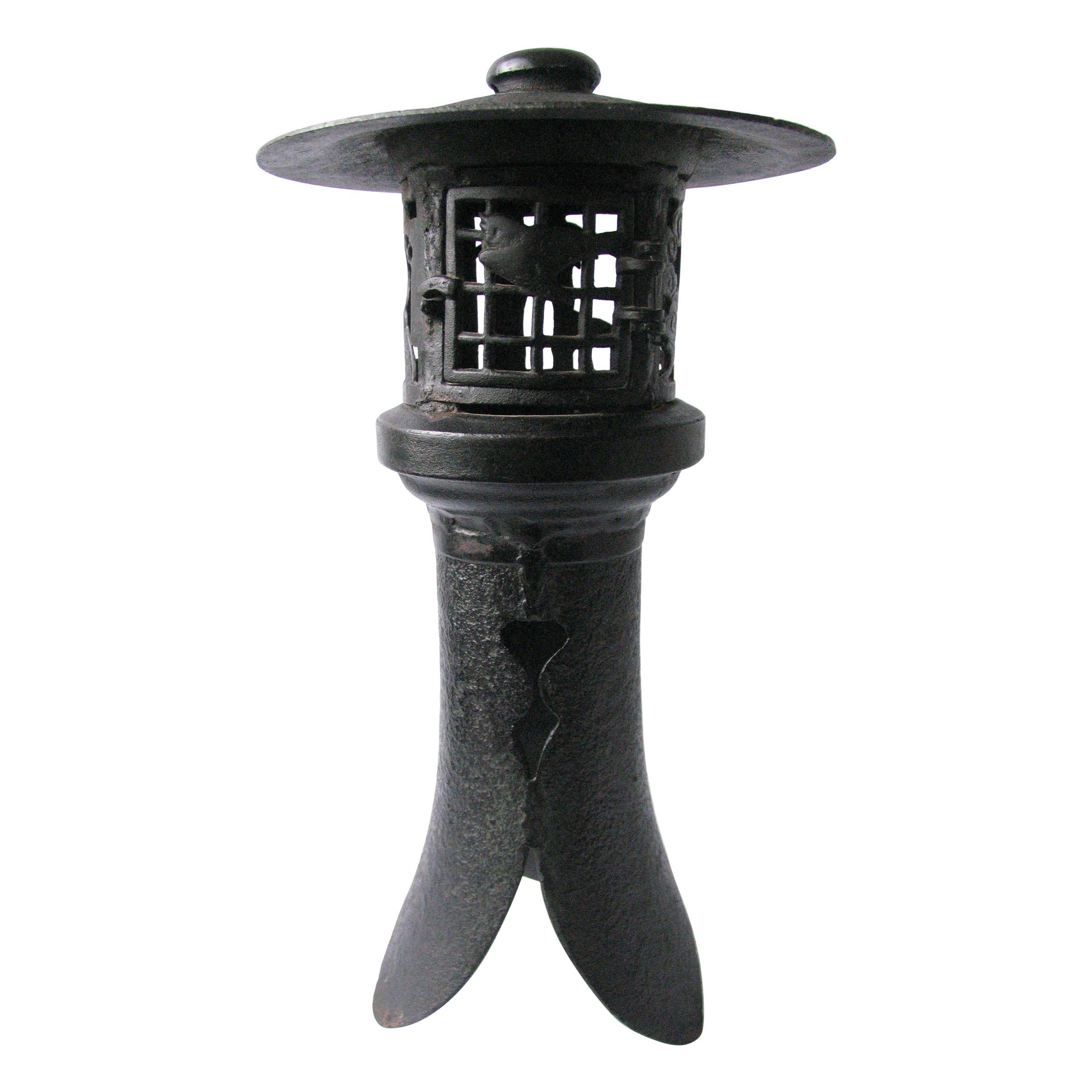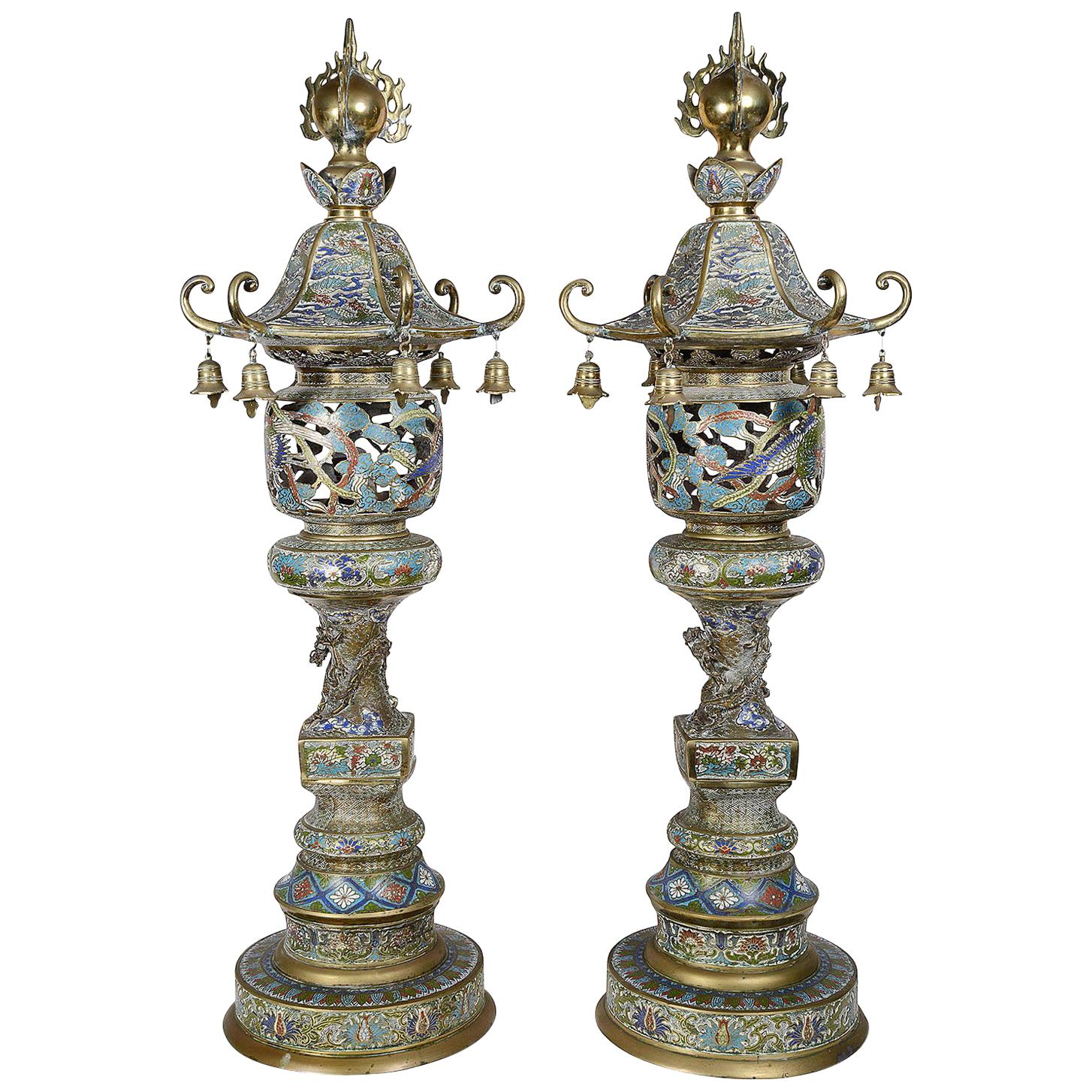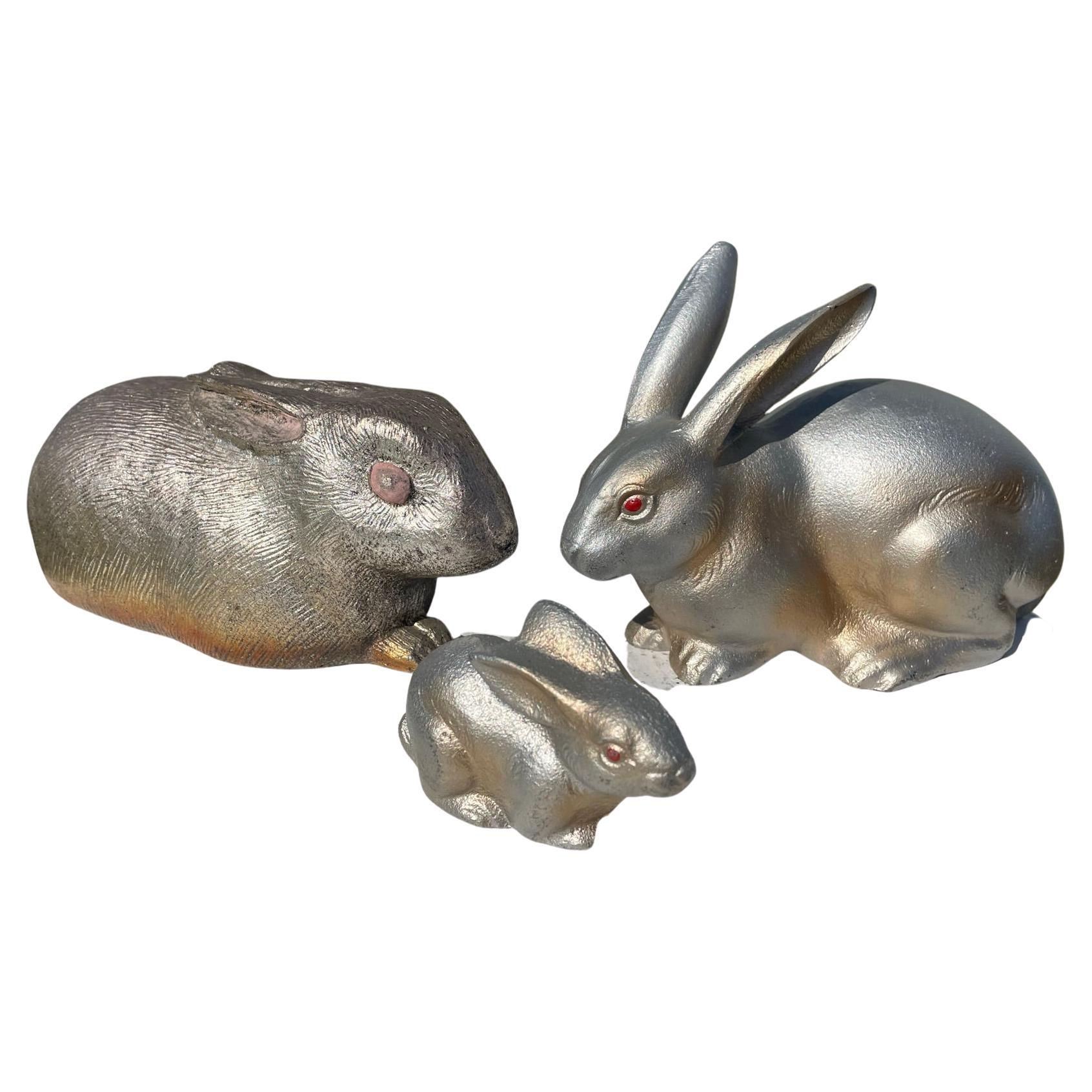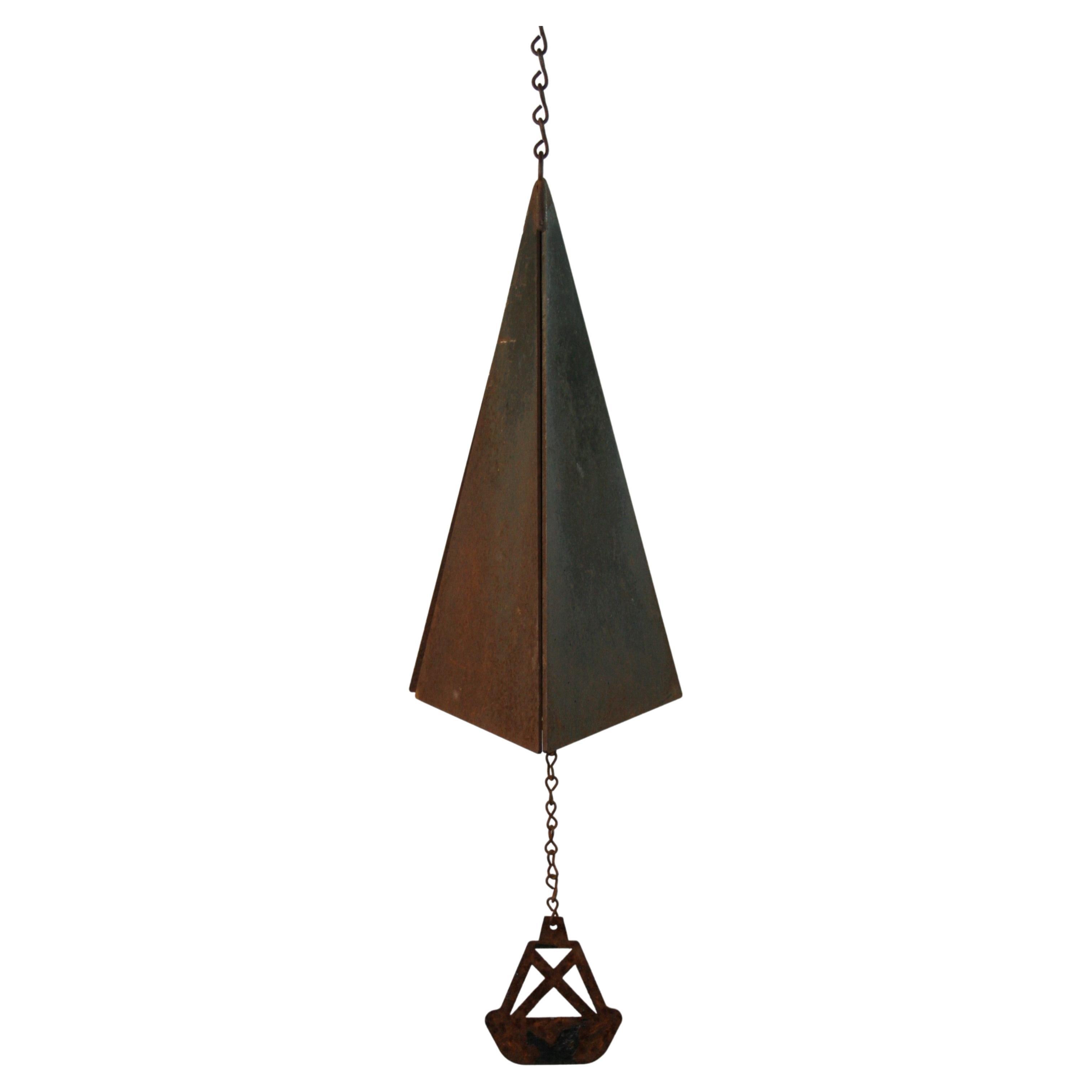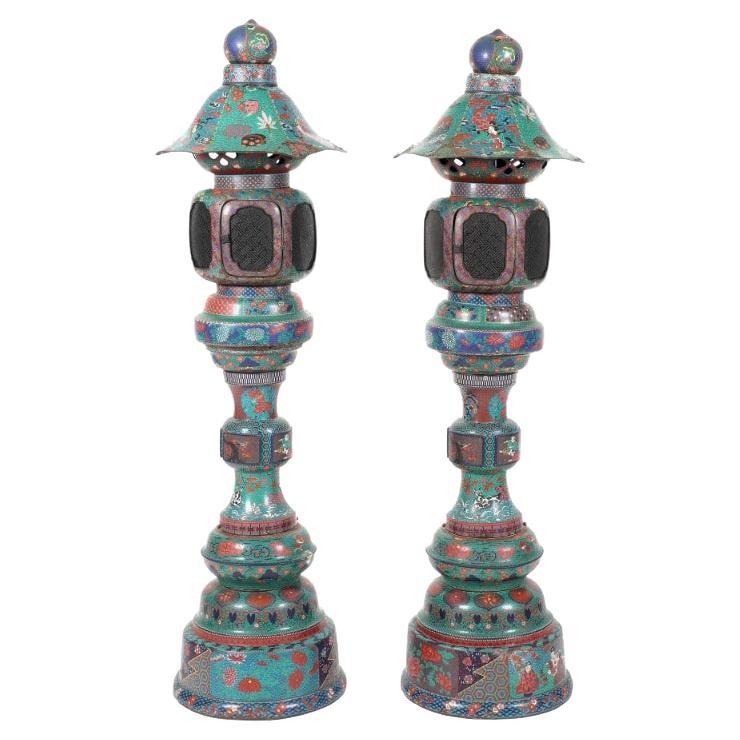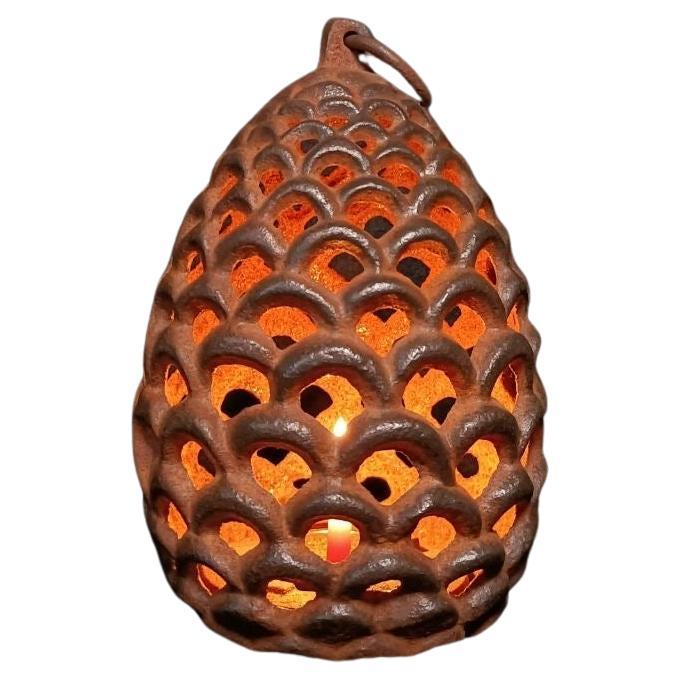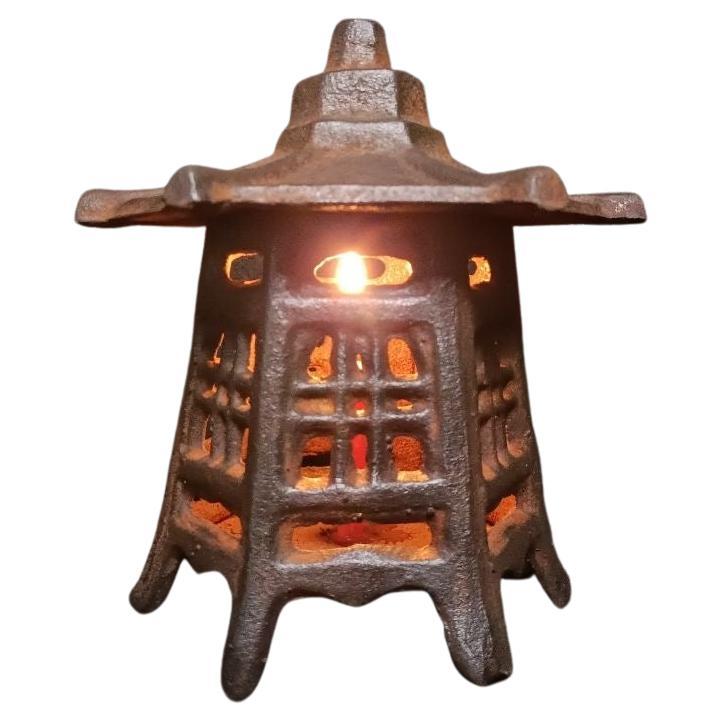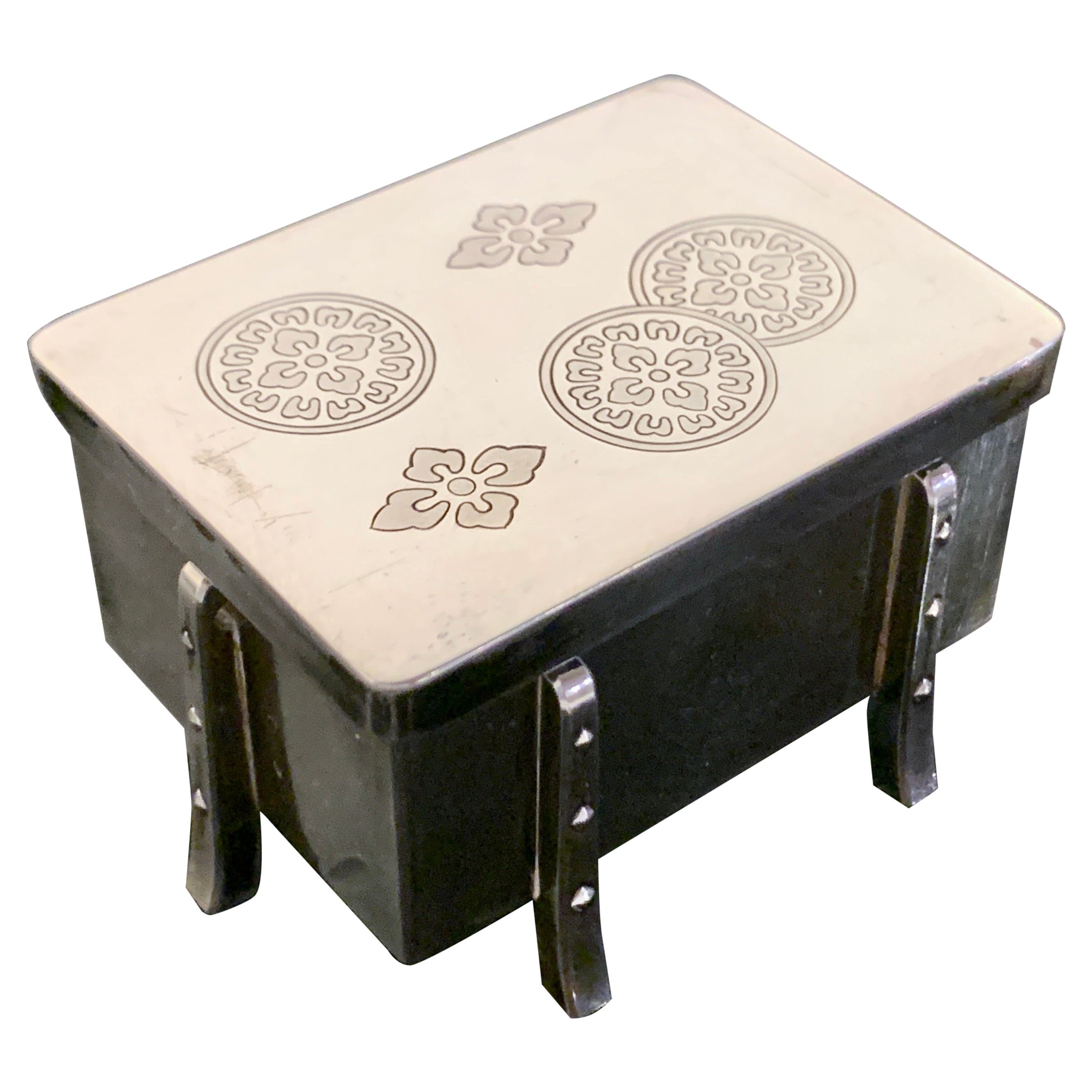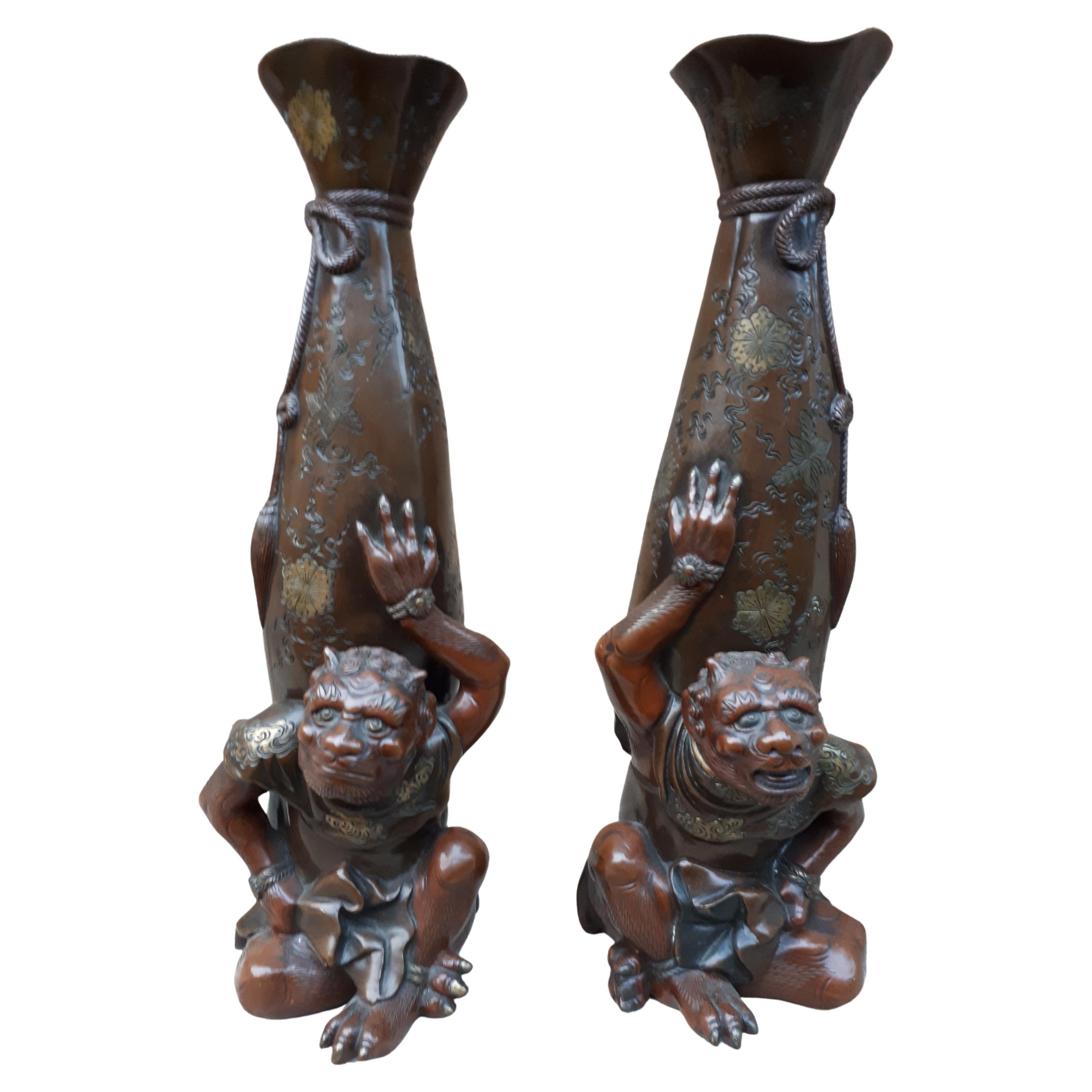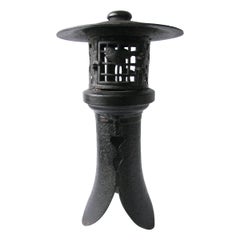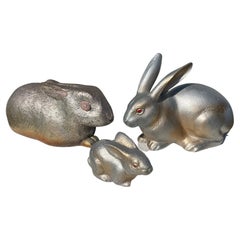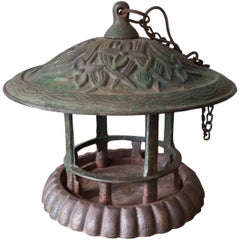
Japanese Garden Lantern
View Similar Items
1 of 6
Japanese Garden Lantern
About the Item
You May Also Like
- Japanese Iron Pagoda Garden LanternLocated in New York, NYMidcentury Japanese cast iron pagoda lantern with lattice fret work hinged door. Bird and bamboo iron cut outs surround pagoda. Beautiful slo...Category
Mid-20th Century Japanese Japonisme Metalwork
MaterialsIron
$2,250 Sale Price23% Off - Pair of Bronze and Enamel Japanese Garden Lanterns, circa 1900Located in Brighton, SussexA good quality pair of Japanese bronze and enamel pagoda shaped garden lanterns. Each with a patinated bright bronze finish and multicolored classical enamel decoration, circa 1900.Category
Early 20th Century Japanese Japonisme Metalwork
MaterialsBronze, Enamel
- Japanese Three Garden Rabbits Family, UsagiLocated in South Burlington, VTFrom our recent Japanese acquisitions and coming from a Japanese collector of rabbit usagi sculptures Rabbit family trio (3) seated rabbit sculptures hand cast and hand painted This is an unusual Japanese one-of-a-kind group in both large and small scale Quality: Hand cast with carved ears...Category
Mid-20th Century Japanese Showa Sculptures and Carvings
MaterialsBronze, Iron
- Japanese Hand Made Garden Wind ChimeLocated in Douglas Manor, NYJapanese hand made garden wind chime.Category
Mid-20th Century Metalwork
MaterialsIron
- Pair Japanese Bronze Pagoda Temple Lanterns, Taisho Period, circa 1920, JapanLocated in Austin, TXAn elegant pair of Japanese cast and lacquered bronze pagoda lanterns, Taisho Period, circa 1920, Japan. The lanterns a true pair, with mirrored decorations and lantern doors opening in opposite directions. The lanterns of traditional toro form, cast in bronze, and lacquered. Each lantern comprised of three parts - the "roof", the "fire box", and the pedestal. This type of pedestal lantern is called a dai-doro, as opposed to the hanging lantern type, tsuri-doro. The hexagonal roof of the lantern, reminiscent of temples or pagodas, features a wonderful, dense cloud pattern with three heart-shaped cutouts, known as inome, or boar's eye. The roof topped by a hoju, the Buddhist flaming Jewel of Wisdom. Each of the six corners feature a fantastic shachihoko, mythical beasts with the face of a tiger and body of a fish. Bells are suspended from the shachihoko. The globular body of the lantern features four pierced panels with the three leaf hollyhock mon of the Tokugawa clan surrounded by a karakusa pattern of scrolling vines. One panel serving as a hinged door with a lock stylized as the Three Jewels...Category
Vintage 1920s Japanese Taisho Lanterns
MaterialsBronze
- Large Pair of Japanese Cloisonne Enamel Lanterns Attributed to Kaji TsunekichiLocated in New York, NYA Large Pair of Japanese Cloisonne Enamel Lanterns Attributed to Kaji Tsunekichi, Edo Period, 19th century Japanese cloisonne lanterns were made during the Meiji period, from the late 19th to early 20th century, and were often used as decorative lighting fixtures in temples and shrines. Kaji Tsunekichi (1866-1916) was a Japanese cloisonné artist who was active in the late 19th and early 20th centuries. He was born in Tokyo and learned the art of cloisonné from his father, Kaji Sataro, who was also a cloisonné artist. He was renowned for his mastery of the shippo-yaki technique, which involves creating intricate designs with thin wires on a metal base before filling in the spaces with enamel. Tsunekichi was known for his exceptional technical skills and his ability to create intricate designs with vibrant colors. His works often featured nature motifs, such as flowers, birds, and fish, which were rendered in a highly detailed and naturalistic style. He also experimented with new techniques, such as plique-à-jour, a type of cloisonné that creates a stained-glass effect. Tsunekichi's works were highly prized during his lifetime and continue to be sought after by collectors today. He won numerous awards for his cloisonné creations, including a Gold Medal at the 1900 Exposition Universelle in Paris. His works are characterized by their fine wirework, precise enamel application, and attention to detail. Some of Tsunekichi's most famous works include a pair of large cloisonné vases...Category
Antique 19th Century Japanese Edo Metalwork
MaterialsCopper, Enamel
Recently Viewed
View AllMore Ways To Browse
Cast Iron Hooks
Retro Iron Hooks
Iron Hanging Lantern
Cast Iron Garden Objects
Vintage Iron Lantern
Lantern Hook
Vintage Japanese Iron
Vintage Cast Iron Lanterns
Vintage Cast Iron Lantern
Japanese Cast Iron Lantern
Vintage Hanging Lanterns
Japanese Cast Iron Garden Lanterns
Vintage Lantern Japan
Vintage Japanese Lantern
Japanese Hooks
Retro Cast Iron Lanterns
Cast Iron Asian Lanterns
Vintage Asian Lantern
